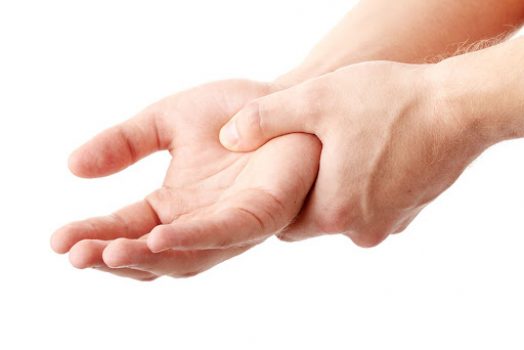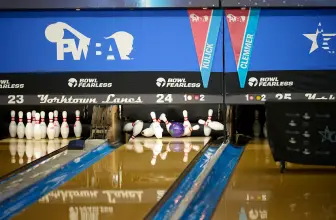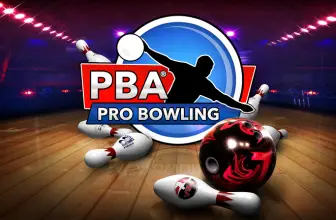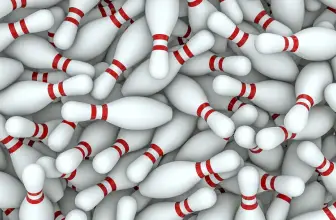Bowling wrist pain can deter recreational and professional bowlers from hitting the lanes. It is counterproductive to continue bowling if you are experiencing wrist pain or any other type of wrist pain, and you risk further injury. This hesitation can prevent you from improving your skills and having fun while bowling.
Bowlers often experience wrist pain due to the nature and physical demands of the game. Bowling can cause wrist pain, especially if it is done wrong. This is because the wrists are one of the most sensitive joints in the body. This article will help you understand the causes of wrist pain in bowling, as well as provide you with bowling tips and tricks to keep your bowling good. But first, let’s check the common bowling injuries of bowlers.
Want to skip ahead to a particular section?
Bowler’s Thumb
Bowlers with a lot of spin on the bowling balls are most likely to get the bowler’s thumb. Your thumb can pinch your ulnar nerve if it is too tight. A little rest and adjusting the ball size can fix a minor thumb injury. You can also buy your own bowling ball so you don’t have to look for it every time you visit Rab’s Country Lanes.
Carpal Tunnel Syndrome
It may surprise you to find carpal tunnel syndrome among the possible injuries for bowling. This painful condition is often associated with mechanics and computer users. Bowlers can also suffer from carpal tunnel syndrome. It’s possible that your wrist nerve is compressed if you feel numbness in your hand and forearm. It is important to ice and rest the affected hand and arm for relief.

Shoulder Injuries
It is not unusual to leave the bowling alley with sore shoulders. Your shoulder is an important part of your bowling game. Shoulder injuries can occur because your arm and shoulder move in a repetitive motion. This injury can be avoided by learning proper bowling techniques before you go to Rab’s Country Lanes. It is important to stretch your arms, legs, and shoulders.
The Different Causes of Wrist Pain When Bowling
Pain can be caused by too much wrist position change, wrist action, or even when you spend a long duration bowling. Pain can be felt immediately, however, most people only start to experience pain after about two or three weeks after bowling.
Some of the common pain felt by bowlers include thumb and wrist pain. Bowler’s thumb is caused when the ulna nerve constantly presses against the bowling ball. The wrist pain, on the other hand, comes from swinging the back and front of the hand causing friction as the hand moves over the portion of the bowling ball.
The following are some of the most common things that can contribute to your pain when you bowl:
- High gripping action- this is common among those who are inexperienced with bowling and can be corrected with ease.
- Excessive wrist bending with the arm in a flexed position as the hand approaches the ball and the wrist is both the cause and effect.
- Wrists that are weaker than the rest of the arm- for those who experience this, there is a possibility of stress injury and may need to take some rest from playing the game.
Repetitive Motion Injuries
This is not only one of the most frequent injuries in bowling but it is also one of the most common in the country.
Repetitive movement injuries refer to a tendon (white fibrous material connecting bone and tissue) and a bursa (a small sac that cushions the area between bone and tendon against friction). They are not able to repair tears caused by activity and can become inflamed.
This inflammation causes pain. The pain can worsen if the injury site is not treated or the repetitive motion that caused it continues. This could lead to more serious possible bowling injuries.
The most common symptoms of repetitive movement injuries are:
- Pain
- Tenderness
- Swelling
- Hot skin or red skin
- Feeling ‘crunchy” when you move the joint.
The first step in treating repetitive motion injuries is to stop the motion that caused them. It may be necessary to stop bowling for a few weeks, which is not a good idea. However, it is better than injuring yourself further and possibly prolonging your recovery.
To reduce swelling and pain, ice your wrist at least 2-3 times per day for 20-30 mins. To ensure full recovery, consult your doctor.
Tendinitis (Elbow Strain)
Tendinitis is closely linked to repetitive motion injuries because it results from a tear of the tendon. This causes inflammation and pain. Although it’s more common in the elbow, it can also happen in the wrist.
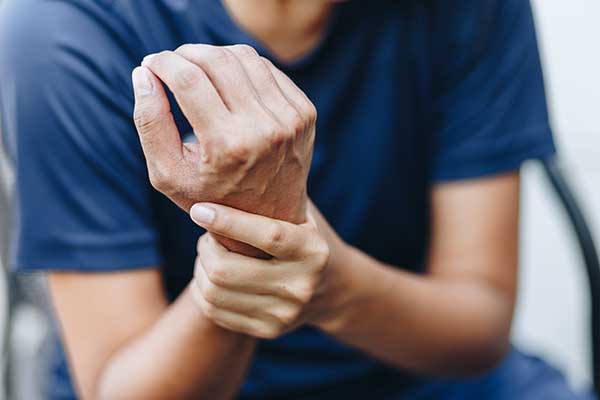
Tendinitis is a common condition.
- The affected area may feel tender.
- Pain that is sudden and severe increases
- Loss of motion in affected joint
- Stiffness in your joint
Doctors recommend the RICE (Rest, Ice, Compress, Elevate,) method of treating tendinitis. It will be treated with anti-inflammatory drugs if it persists.
Carpal Tunnel Syndrome
Carpal tunnel syndrome occurs when the median nerve, which controls sensation and movement in your thumb and most fingers, is compressed.
The carpal tunnel is a passage in the wrist that allows the median nerve to pass from your hand down the length of your arm. This swelling can be caused by repetitive motions, such as bowling with your wrist, or conditions like diabetes, rheumatoid, hypothyroidism, or obesity.
The most common symptoms of carpal tunnel syndrome are:
- Hand numbness
- Tingling in your hand
- Hand weakness
- The sensation of burning in the hands
- Slower nerve impulses in fingers
- Loss of muscle mass can cause cramping and pain.
- Hand weakness and loss of coordination
- Permanent muscle damage
- Function lost in your hand
It is important to seek medical attention immediately if you have carpal tunnel symptoms. Carpal tunnel can cause severe hand dysfunction and should be treated immediately.
Your doctor might recommend that you rest your wrist and hand, place your wrist in warm water, and then flex your fingers. A wrist brace may be recommended for support.
For more severe cases, steroids and corticosteroids may need to be prescribed. In some cases, surgery may be necessary.
How to Limit Wrist Pain When Bowling
Bowling is a pretty simple sport. You just need to throw a bowling ball down a lane. Although it looks relatively easy, even professional bowlers can injure themselves as this sport means added stress on your body.
Whether you are a professional bowler or someone who bowls for the first time, your bowling wrist can experience some wrist pain. It is a common condition. You are likely to deal with it if you bowl a lot.
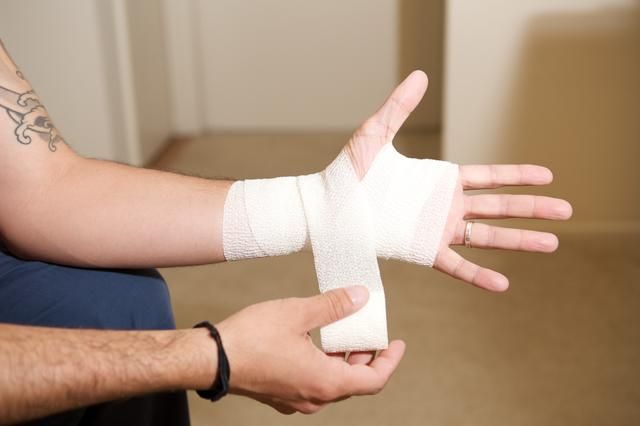
Here are a couple of simple tricks that can help you alleviate wrist pain.
Go for the Right Fit
You need to choose the right sized bowling ball for you. The perfect bowling ball fit is the only way to prevent experiencing bowling wrist pain. You may feel some wrist pain if the bowling ball does not fit your hand properly.
To find the right fit, you can do some research on bowling ball sizes, materials, and types at home. Testing different sized bowling balls will also allow you to see which bowling ball is perfect for you.
So if you have long fingers, you should go for a ball with a larger circumference. However, if your fingers are shorter, you should prefer a ball with a smaller circumference.
Using a bowling ball that is the right fit will prevent wrist joint stress and wrist pain when you are playing the game.
Hydration
Every professional athlete knows that the body needs more water. When you are bowling, your body loses lots of fluids. The more you sweat during bowling, the more fluid you are losing. If you get dehydrated while playing the sport, health problems can occur. You need to ensure that you stay hydrated when bowling.
How Can you Prevent Wrist Injuries From Bowling?
There are many ways to protect your wrist while bowling. These preventive measures can help you keep your wrist healthy and reduce your risk of getting serious injuries such as the ones mentioned above.
Stretching
As with all sports, stretching before, during, and after exercise can help reduce the risk of injury to your joints and muscles. Bowling is no exception! You should stretch your wrists and muscles before, during, and after every turn.
Proper Form
When bowling, ensure you are using the correct form and stance. This will ensure that you use your muscles and joints correctly, and reduce the risk of injury.
Proper bowling ball weight
It is vital to use the right bowling technique. While bowling with the right weight can increase wrist strain, using a heavier ball will cause it to become more painful.
The risk of long-term injury increases when you throw a heavier ball.
Wear a wrist brace
Braces are great for helping injured wrists, but they can also prevent injuries from happening in the first place. It is a great way for your wrist to be protected and reduce your chance of injury.
Does Bowling Wrist Brace Support Work?
This question can be answered both yes and no. It all depends on what brace you are using and for what purpose. Every person’s wrist is different and every bowler has a different style. One type of wrist support might work well for one bowler, but another may need a completely different brace.
A wrist brace is a device that supports your wrist. There are many options available. Many bowlers use wrist supports to stabilize their game, train their wrists for specific releases, or increase their bowling ability.
The support keeps the wrist stable and steady throughout the throw and lowers the wrist at the release point. This helps to increase your bowling skills. This results in well-directed throws and better hook throws.
It is important that you practice with your wrist brace before playing serious bowling.
As you receive your chosen support, you will have to adapt to the changes in the way you feel and the techniques you use.
What’s Bowling Tape for?
The temperature, humidity, and repeated motions during a bowling session can cause a bowler’s thumb to shrink or swell. If your fingers shrink, your grip can become unsafely loose and your hand may be open to injury.
Bowling tape can be used to reshape your bowling ball’s gripping holes. This allows you to adjust the holding force of the thumb to the correct level, regardless of whether your thumb shrinks or expands. Two types of insert tape are available for the thumb hole: one is a smoother, textured white tape while the other is smoother. This tape can be used to help a bowler find a consistent shot and grip throughout the game. It also helps reduce the risk of injury due to a bad grip.
Closing Thoughts
It is common to feel pain in the wrist when bowling, but it can also be very bothersome and a sign of serious injury. You can reduce your chances of getting injured or worsening an existing injury by taking proper precautions, such as using a protective bowling glove, bowling tape, or wrist guard. To ensure that any pain you feel during or after a session of bowling is not a sign that there is a more serious problem, consult a doctor.
Bowling Wrist Pain F.A.Q.
- Does a wrist brace help bowling?
Wrist supports are designed to help bowlers achieve a better hand position. Some bowlers are able to do this without the support of wrist support. Others need help. This allows them to improve their shot repeatability.
- Can you break your wrist from bowling?
This question can be answered with a resounding “YES“. Bowlers are very likely to sustain wrist injuries.
- Why do bowlers tape their wrists?
It provides some support but allows full movement for the release.
